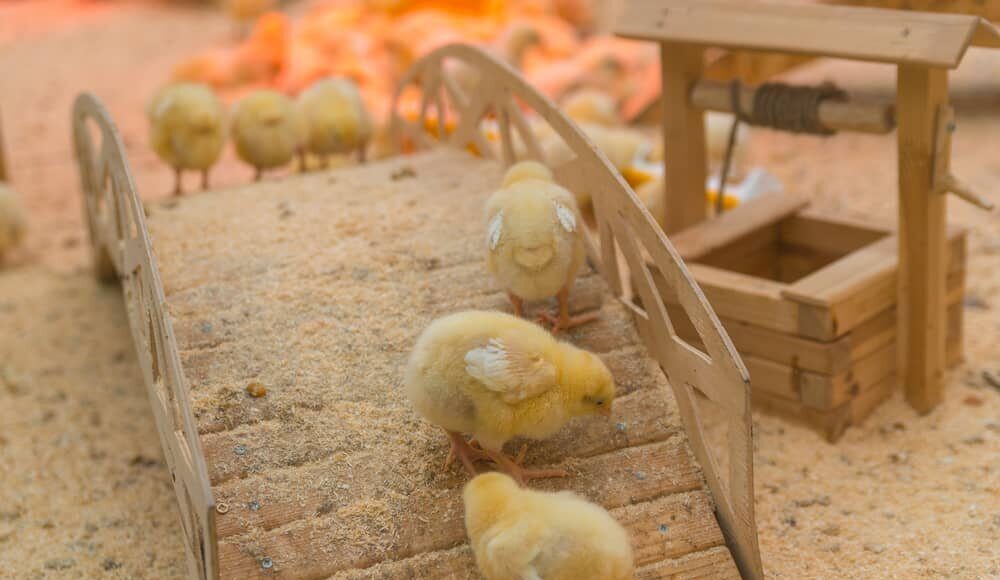Raising chicks is a rewarding experience, and many enthusiasts have found innovative ways to do so, including brooding chicks in basement. The benefits of using your basement are abundant, offering a controlled environment that can easily be adjusted to suit the needs of your growing chicks. In this guide, we will explore everything you need to know about brooding chicks in basement and how to ensure their healthy development.

Why Choose the Basement for Brooding?
The basement offers a stable temperature, protection from predators, and a quiet space for your chicks to grow. Unlike outdoor brooders, basements allow you to closely monitor and control the environment, making it an ideal choice for many chicken enthusiasts.
Temperature Control
Maintaining a consistent temperature is crucial for chick development. Basements typically have a stable temperature, which can be easily adjusted with heaters or lamps to provide the warmth chicks need.
Protection from Predators
Keeping chicks in the basement minimizes the risk of predators such as raccoons or hawks, ensuring a safer growing environment.
Setting Up Your Basement Brooder
Creating a comfortable and effective brooder setup in your basement requires careful planning. Here are some essential elements to consider:
Space and Layout
Select an area in your basement that is free from drafts and moisture. Ensure there is enough space for your chicks to move around and grow. Consider using a Space-saving brooder if you’re limited on space.
Bedding Options
Opt for absorbent bedding materials such as pine shavings or straw. Avoid cedar shavings as they can be harmful to chicks.
Heating and Lighting
Use a heat lamp or brooder plate to maintain a temperature of around 95F during the first week, decreasing by 5F each week thereafter. Ensure the heat source is secure and cannot tip over.
Feeding and Watering
Proper nutrition and hydration are crucial for your chicks’ development. Here’s how to manage feeding and watering in your basement setup:
Feed Options
Provide a high-quality chick starter feed. This feed is specially formulated to meet the nutritional needs of young chicks. Consider introducing grit once they are a few weeks old to aid digestion.
Water Management
Ensure fresh, clean water is available at all times. Use a shallow dish to prevent drowning and change the water regularly to prevent contamination.
Monitoring Chick Health
Regular monitoring is essential to ensure your chicks are healthy and thriving. Look out for signs of illness or distress and take action promptly.
Signs of Healthy Chicks
Healthy chicks are active, alert, and have bright eyes. They should be eating and drinking regularly and have smooth, clean feathers.
Common Health Issues
Watch out for signs of pasty butt, respiratory issues, or leg problems. If you notice any of these symptoms, consult a veterinarian immediately.
Maintaining the Brooder
Keeping the brooder clean is crucial for the health of your chicks. Develop a regular maintenance schedule to ensure a healthy environment.
Cleaning Routine
Remove soiled bedding daily and replace it with fresh material. Clean and disinfect feeders and waterers regularly. For detailed cleaning tips, refer to Cleaning a brooder.
Transitioning Chicks Outdoors
As your chicks grow, they’ll eventually need to transition to an outdoor coop. Prepare them for this change gradually.
Adapting to Outdoor Conditions
Begin by exposing them to short periods outside to acclimate to the new environment. Gradually increase the time spent outdoors until they’re ready to move permanently.

FAQs
Can I brood chicks in a damp basement?
It’s best to avoid damp areas as they can lead to respiratory issues. Ensure your basement is dry and well-ventilated.
How often should I clean the brooder?
Daily spot cleaning is recommended, with a thorough clean once a week to ensure a healthy environment.
What should I do if a chick shows signs of illness?
Isolate the sick chick and consult a veterinarian for a proper diagnosis and treatment plan.
For more tips on setting up a brooder, check out this brooder guide.
This article contains affiliate links. We may earn a commission at no extra cost to you.










